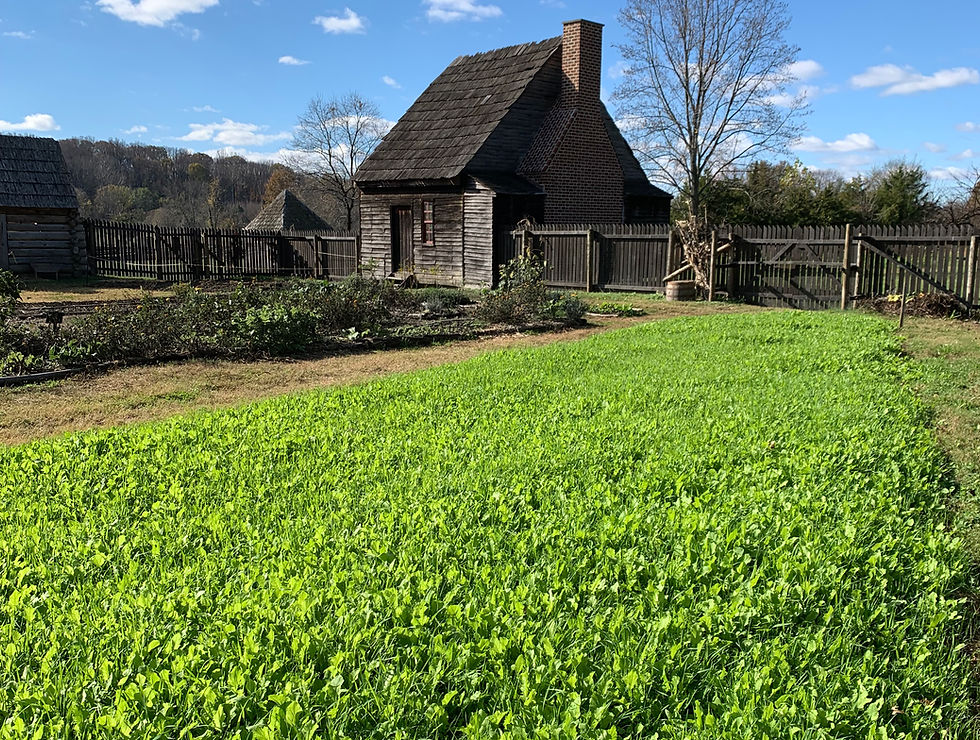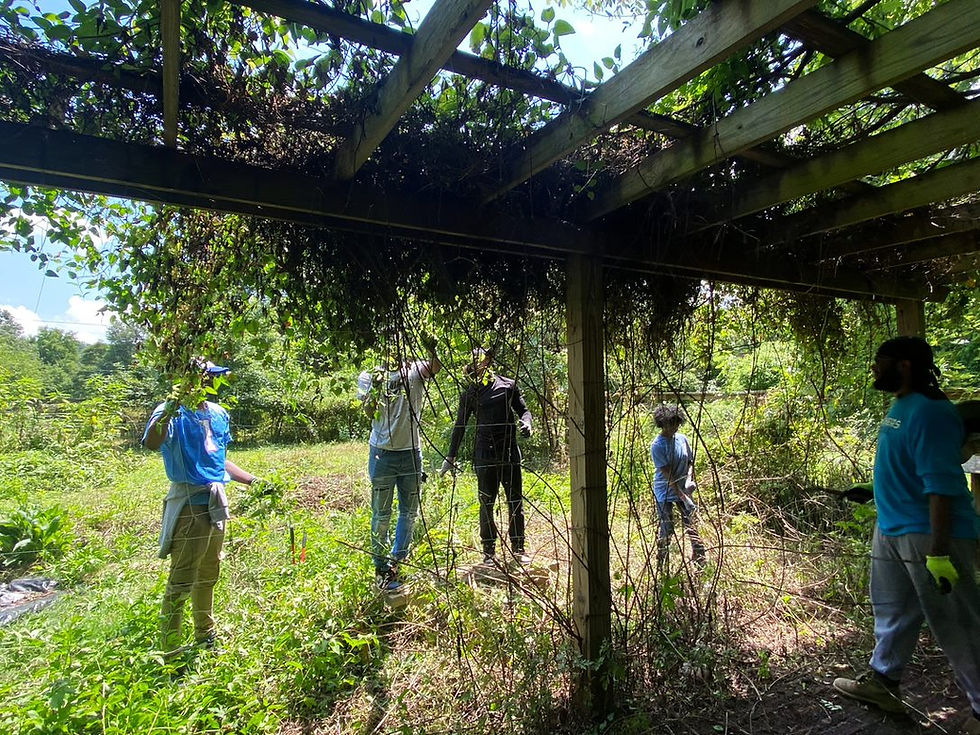Food Is Everywhere
- Accokeek Foundation

- Sep 11, 2012
- 2 min read
by Becky Seward, Ecosystem Farm Manager
Harvesting is my favorite farming activity, tied with transplanting seedlings. The tactile element is exaggerated when parting a wily tomato plant for fruit, or prying apart delicate lettuce babies for relocation into a bigger flat. I find I have the same feeling: of training my eyes for aesthetic abundance, when I take walks in the woods, searching for medicinal and edible plants. The two methods of food gathering, that come about through very different processes, evoke the same basic desire within me. It is something as primal as sitting around a campfire. It is the gatherer part of me, and it reminds me to consider the overlapping relationship between wild and cultivated food.
Every plant we grow on the farm began somewhere in the evolutionary scheme of things as a wild plant, indigenous to some part of our planet, settling into its ecological niche. At some point humans came in, plucked out the plant and developed it into a tastier or hardier version of itself, in the process changing the chemistry of the plant for human consumption. The tomato, which has no direct native species (the primogenitor is the tomatl of the central Andes), came to Italy around 1522. It did not make it into the hearts of Americans until the early 20th century however, as it was considered poisonous and generally too luscious for public consumption.
The garlic we know now in its cultivated form originated in Asia as long as one thousand years ago, but there is no shortage of native edible plants all around us with that potent spicy savory flavor. Ubiquitous garlic mustard in early spring, ramps from the Appalachians, wild onion, and chives all are wild and delicious in this region and can be found safely and in abundance in our woods and fields. While we may not find the cucumber growing wild in the nearest cleared land, it has been common in botanical history as long ago as 7750 BC, when it was cultivated near its native southeast Asia. This plant, taking many different shapes in many different food cultures, often interbreeding with other members of its plant family, the cucurbits, has survey benefited from such long standing human attention, to the point where there are pests of several different families of insects that thrived on our cucumber crop this season!
In my engrossed delight at finding a rare carnivorous plant in the swamp, I find the gatherer and also the mad scientist. In their prolific diversity, I am able to see why plants have inspired us to manipulate (breed) them with as much creativity as there are vegetable varieties. Grab a field guide and go try something wild today with your cultivated veggies!
This article was published and distributed in Field Notes, a weekly CSA publication.







